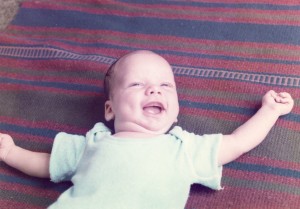Red Wine and Best-of-Breed Education

Nice chateau. Pity about the wine.
Some years ago I went with colleagues to a very traditional French restaurant in New Orleans. I asked for the wine list and received a very large book filled with French wines. I turned to the section on Bordeaux wines and found that it was organized by the Official Classification of 1855 as requested by Napoleon III. I thought, “Really? They want me to select a wine based on what people thought in 1855?”
The traditional way to evaluate French wines was to review the history of the chateau, identify the best winemakers, discuss the soil, humidity, and sunlight of the vineyard (the terroir), study the label, the bottle, and the cork, and then – and only then – taste the wine. Only by studying the wine’s history and pedigree could you truly appreciate what was in the glass. If you knew your history, the label would tell you what to expect.
Beginning in the 1970s, the wine world began to flip the model, largely because of the influence of California vintners. Rather than focusing on history (California had none) and traditional markers of prestige, the emphasis shifted to what’s in the glass. How does it taste? What can you discern by sniffing and sampling the wine? What flavors are in the glass? What flavors should be in the glass?
Blind taste tests began to replace traditional French methods of evaluating wines. In the Paris Wine Tasting of 1976 (often known as The Judgment of Paris), French judges were shocked when they learned that they themselves had rated many California wines better than elite French wines. Indeed, a California wine was judged the best white wine in the competition. (You can read about the competition – and a lot more – in Lawrence Osborne’s book, The Accidental Connoisseur).
So what does wine tasting have to do with higher education? Well, it strikes me that we’re still evaluating students using the traditional French method of evaluating wine. If the chateau that produced the wine has a good reputation, then the wine in the glass must be good. If the school the student attended has good reputation, then the student must be well educated.
It’s all rather silly, isn’t it? What we really want to know is how good is the wine and how well educated is the student. A prestigious chateau can produce a terrible wine. An elite university can produce poorly educated students.
Flipping the higher education model would create a student-centric model. Just as we ask, what’s in the glass?, so we should ask what’s in the student? It’s not about the reputation of the institution; it’s about how well the student has absorbed the education and what he or she can do with it.
Today, we’re accustomed to rating wines on a 100-point scale based on blind tastings. (I think the French are still annoyed by this). Why can’t we do the same with students? Is the educational bureaucracy the only obstacle? Then I think there’s hope. After all, we flipped the wine model in France … and they’re the ones who invented the word bureaucrat.
Delivering Student-Centric, Best-of-Breed Education

Passport to Education
So, how do we deliver student-centric, best-of-breed education? It’s a worthy goal and I think three things have to happen. Here they are … I’d love to hear what you think as well.
1) Develop the student passport – if education is invested in the student rather than the institution, we’ll need a way to track what students are doing over time. I think of it as a passport, in three different ways: 1) It’s kept by the individual rather than the institution. 2) It’s universally recognized. 3) It keeps track of all the individual’s educational experiences.
On the other hand, it’s probably not a physical booklet but rather an online system. The student is responsible for keeping it up to date and can choose to give access to it (or not) to educational institutions, potential employers, potential spouses, and so on.
2) Agree on the competency required – let’s say a student acquires a number of educational experiences and claims that the sum of those experiences is equivalent to an MBA. To decide whether the claim is accurate, we first need to have some agreement on what constitutes an MBA.
That may sound difficult to achieve but we’ve already made a lot of progress. Different schools may have different emphases but accrediting agencies have a sense of what the common competencies are. Indeed, we now have a vision of a Common Core Curriculum for public education in the United States – and that was certainly a politically fraught process. Deciding what competencies constitute an MA or and MBA or a Ph. D. should be simple by comparison.
Notice that I emphasize “competency” rather than “curriculum”. Schools today may teach the same curriculum but some teach it well and some teach it poorly. We get by with a rough-and-ready sense of the prestige of the institution granting the degree. For instance, we might value a degree from Stanford more than a degree from Princeton. But that’s a very slippery yardstick and a student-centric universe would value what’s in the student more than what’s in the institution.
3) Universal testing, certification, recognition – if we focus on competencies rather than curricula, we’ll also need some method to test and certify that a given student has a given competency. We already have this in professions like law, medicine, and architecture. In a student-centric world, we would extend the model to other disciplines and professions. Indeed, I’ve always wondered why we need to test and certify architects but not, say, captains of industry.
We already have a number of testing agencies at the national level. For instance, Educational Testing Services (ETS) administers admission exams such as the SAT and GRE in the United States. ETS seems to be well positioned to test other competencies the domestic market. I would argue, however, that the testing should be global rather than national. At the moment, I don’t see an institution that’s ready to take on a global role.
So there you have it. Just three small steps to flip the educational model and put the student at the center of the universe. Can we do it? Well, we’ve already done it with wine. More on that tomorrow.
Best of Breed Education

Baby Talk – Competency Level 1
When Elliot was a teenager, he went off to a weeklong sailing course approved by the Royal Yachting Association (RYA) in Britain. He passed with flying colors and received an International Certificate of Competence as a Sailing Crew Member – Level 1. The certificate attests to one’s “ability and provides documentary assurance from one government to another that the holder meets an agreed level of competence….”
With his certificate in hand, Elliot could serve on any sailing crew that requires Level 1 competency. He could also take his certificate to any other RYA-approved sailing school and immediately enter the course to achieve Level 2 competency. He could choose the next sailing school based on schedule or location or teacher or whatever. Not only does Elliot know something but his knowledge is also certified in a manner that’s globally recognized. That means he has a wide array of choice and options – he’s a free agent.
Why couldn’t higher education work the same way? Why can’t we flip the educational model to make it student-centric? Why can’t a student accumulate knowledge from a variety of sources and then have it certified in a globally recognized manner?
For instance, my online students at the University of Denver clearly want to acquire knowledge that will afford them broader skills and opportunities. Some are pursuing knowledge for the sake of knowledge. But many students also want that knowledge to be certified. Since the University grants the certification, students are incented to take courses only from one institution. It’s an institution-centric system.
Now the University of Denver is a great school but why couldn’t one of my students – perhaps living in Montana – also take online courses from New York University and the University of Toronto and the London School of Economics plus some on-campus courses at Montana State and have it all count toward a Master’s degree? In fact, why couldn’t she also acquire knowledge from workshops offered by the local Chamber of Commerce or a chapter of the Project Management Institute and also have that knowledge count toward a degree?
Why couldn’t she bundle it all together and have it certified as the equivalent of an MBA? We can certainly imagine that courses from multiple sources might offer a richer, more varied, and perhaps higher quality education. Every university has some good teachers and some not so good teachers. Why not select the best teachers and best courses from multiple institutions rather than taking all courses from only one school? Let’s call it best-of-breed education.
To deliver student-centric, lifelong, best-of-breed education, we’ll need to develop several new processes and agencies. The good news is that several of them are already under way. Let’s talk about them tomorrow.
Popping The Filter Bubble
 Let’s say that I’m a vocal and vehement advocate of a flat tax. I’m adamant that implementing a flat tax will solve all the world’s problems. I read widely on flat tax theories … and I only read articles that agree with me. Why bother reading the opposite side? I already know they’re wrong.
Let’s say that I’m a vocal and vehement advocate of a flat tax. I’m adamant that implementing a flat tax will solve all the world’s problems. I read widely on flat tax theories … and I only read articles that agree with me. Why bother reading the opposite side? I already know they’re wrong.
What could be wrong with this? Well, two things. First, it could lead to dementia. The theory is that reading things that I agree with only reinforces existing connections in my brain. It doesn’t create new connections. Creating new connections seems to be a good way to forestall dementia. So, reading contrary opinions may lead to improved brain health.
Second, reading only things I agree with could lead to more extreme positions and greater animosity between people of different political convictions. The body politic polarizes. Does that sound familiar? Can we blame it all on the Internet? Maybe.
Now let’s extend the example. Let’s say that I use a search engine to find new articles about flat taxes. Let’s also assume that the search engine is smart enough to recognize that I only select articles that are positive about flat taxes. So, the search engine does me a “favor” and only presents positive articles. Not only do I not read contrary opinions, I’m not even aware that such opinions exist. Further proof that I must be right!
Several years ago, Eli Pariser coined the term “the filter bubble” to describe this phenomenon. Pariser argues that we live in bubbles that filter out important information, including information that would counter our opinions. (I typically use the term “echo chamber” for the same effect).
To my way of thinking (which may be filtered), this is a serious problem. Fortunately, according to a recent article in Technology Review, there may be ways to build recommendation engines that expose people to contrary ideas in such a way that they receive them with reasonably open minds.
Researchers in Barcelona built an engine based on the “idea that, although people may have opposing views on sensitive topics, they may also share interests in other areas. [The] recommendation engine … points these kinds of people towards each other based on their own preferences.”
According to the researchers who designed the engine, ““We nudge users to read content from people who may have opposite views … while still being relevant according to their preferences.”
The engine creates a “data portrait” for users and compares them. Users who have similar data portraits except for the “sensitive issue” (the flat tax, in our case) are connected to each other. They find that they share many interests even though they’re on opposite sides of the sensitive issue. However, because there is some common ground, the people are more willing to listen to each other.
It seems like a promising start and I’m going to try to use the recommendation engine to see what my data portrait looks like. I’ll report results as soon as I can. In the meantime, you can the original research article here.
Are MOOCs For Rich People?

It’s not what I expected.
When I was an undergraduate at the University of Delaware, I worked in the College Try program, which reached out to students who were traditionally underserved by the university. This generally meant ethnic minorities and/or students from poorer families.
The program provided extra assistance to prepare students to succeed in university. For two summers – after their junior and senior years of high school – the students lived on campus for six weeks and took college preparatory courses. We aimed to get them prepared academically and socially for university (and dormitory) life.
When the students arrived as freshmen, they took classes with our best teachers and received extra tutorial assistance. I was one of the tutors for the first two years of the program. I lived in the same dormitory with the students and was available day and night.
I thought College Try was an exceptionally well-designed program. Unfortunately, it doesn’t seem to have worked. I just checked the ethnicity statistics for the University of Delaware and they don’t look much different from when I was there.
So, how can we provide the benefits of higher education to traditionally underserved students? As MOOCs grew in popularity over the past several years, I thought they might hold the answer.
MOOCs – Massive Online Open Courses – take the best classes from the best professors and put them online. Anyone with Internet access can take them. There are no entry or residency requirements. Typically, they’re free or very inexpensive. We’re still sorting out how to give credentials for participating in MOOCs but I think we’ll soon iron out the details. Meanwhile, the knowledge is there for the taking.
I teach online courses at the University of Denver. Technically, they’re not MOOCs (we charge tuition) but they’re very similar. I can personally attest that online education can be very effective. It’s different than the classroom but still quite engaging. Based on my experience, I believe that MOOCs can offer many of the benefits of higher education, especially at the graduate level.
So, are MOOCs reaching traditionally underserved students? Are they democratizing access to higher education? Unfortunately, the early results are disappointing. I base this on two recent developments.
The first development is Udacity’s “pivot” away from higher education and toward the corporate training market. Udacity is one of the pioneers of the MOOC movement and its pivot has drawn a great deal of attention. Several articles (here, here, and here) suggest different causes, including poorly designed software, very high attrition rates, and a lack of focus.
For me, the most telling statistic is that successful Udacity students are people who are already quite well educated. The typical person who completes a course already has a Bachelor’s degree and often holds graduate degrees as well. Udacity succeeded in educating the educated, not the uneducated.
The second point comes from the University of Pennsylvania, which surveyed 34,000 students who began at least one of the University’s 24 MOOC classes (based on the Coursera platform, a Udacity competitor). The survey found that most students were “well educated, employed, young, and male.” In other words, not the traditionally underserved.
I suspect that MOOCs may be caught in the hype cycle that’s described by the Gartner Group. We’ve seen the peak of inflated expectations and we’re now entering the trough of disillusionment. Perhaps in a year or two, we’ll get to the slope of enlightenment and ultimately arrive at the plateau of productivity. I personally think that MOOCs have a lot to offer. But we still have a long, strange trip ahead of us.